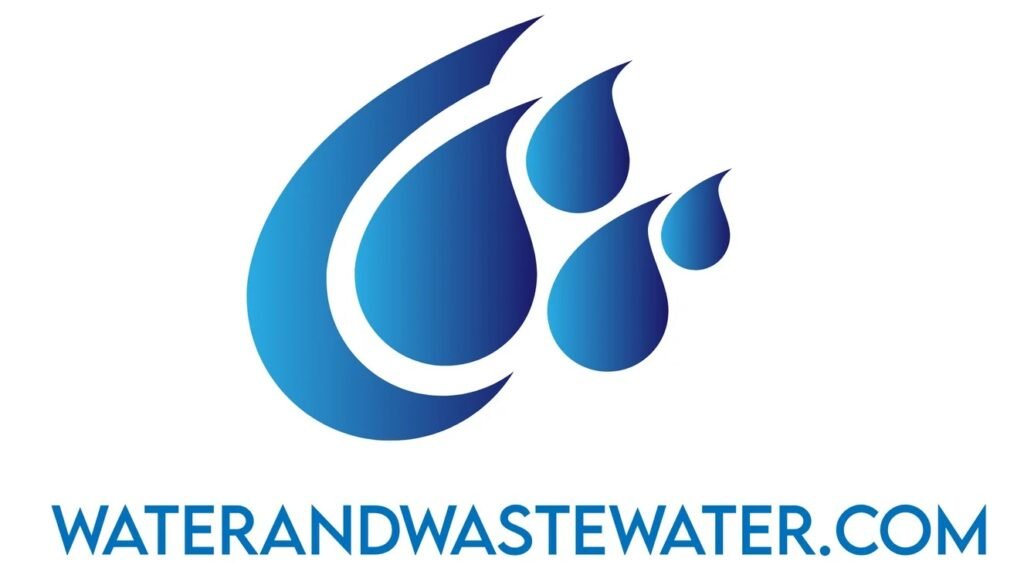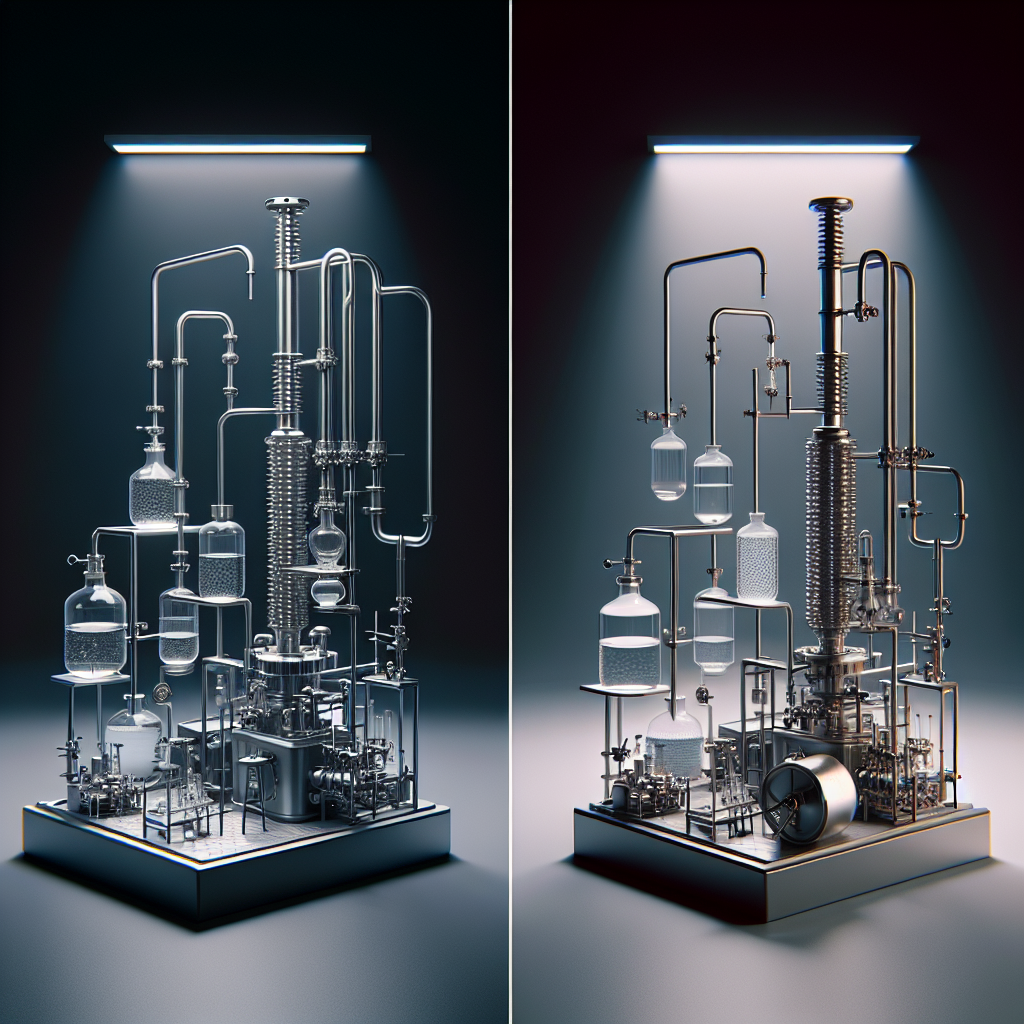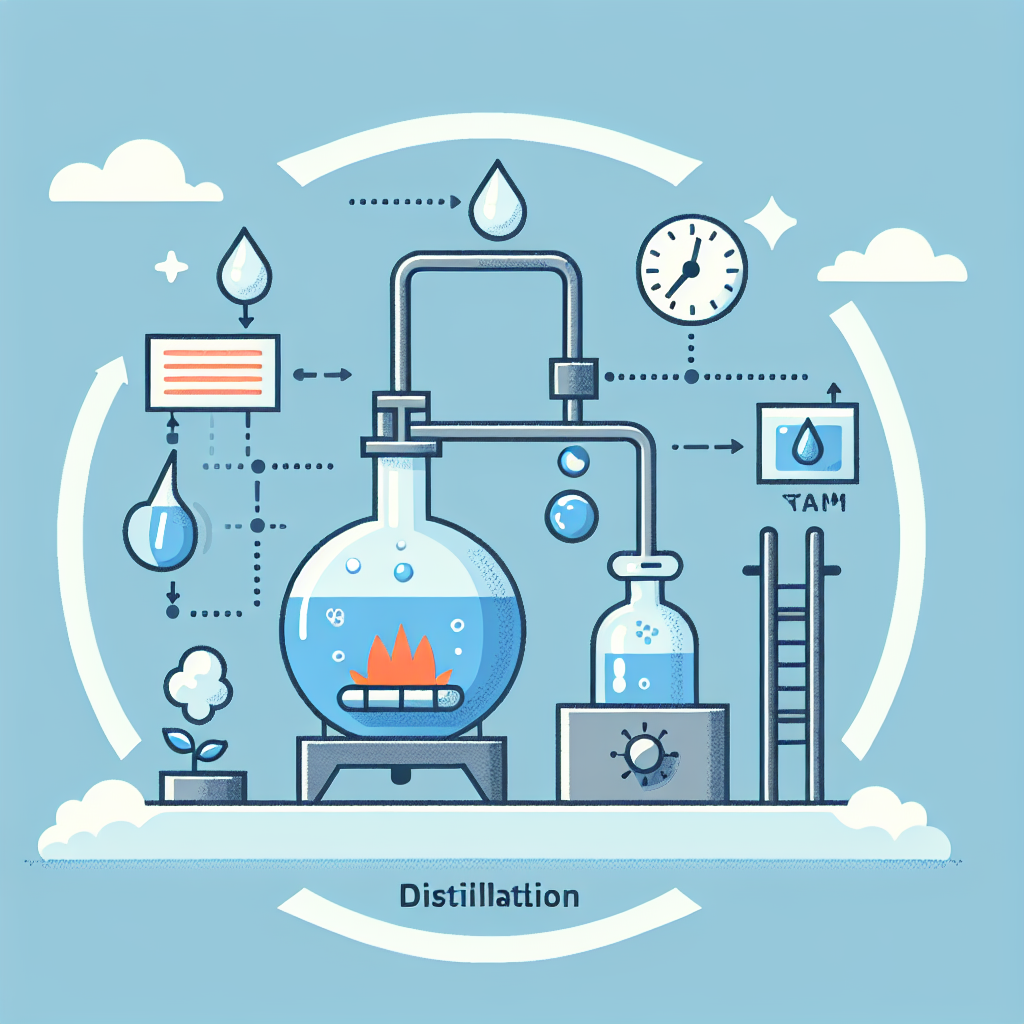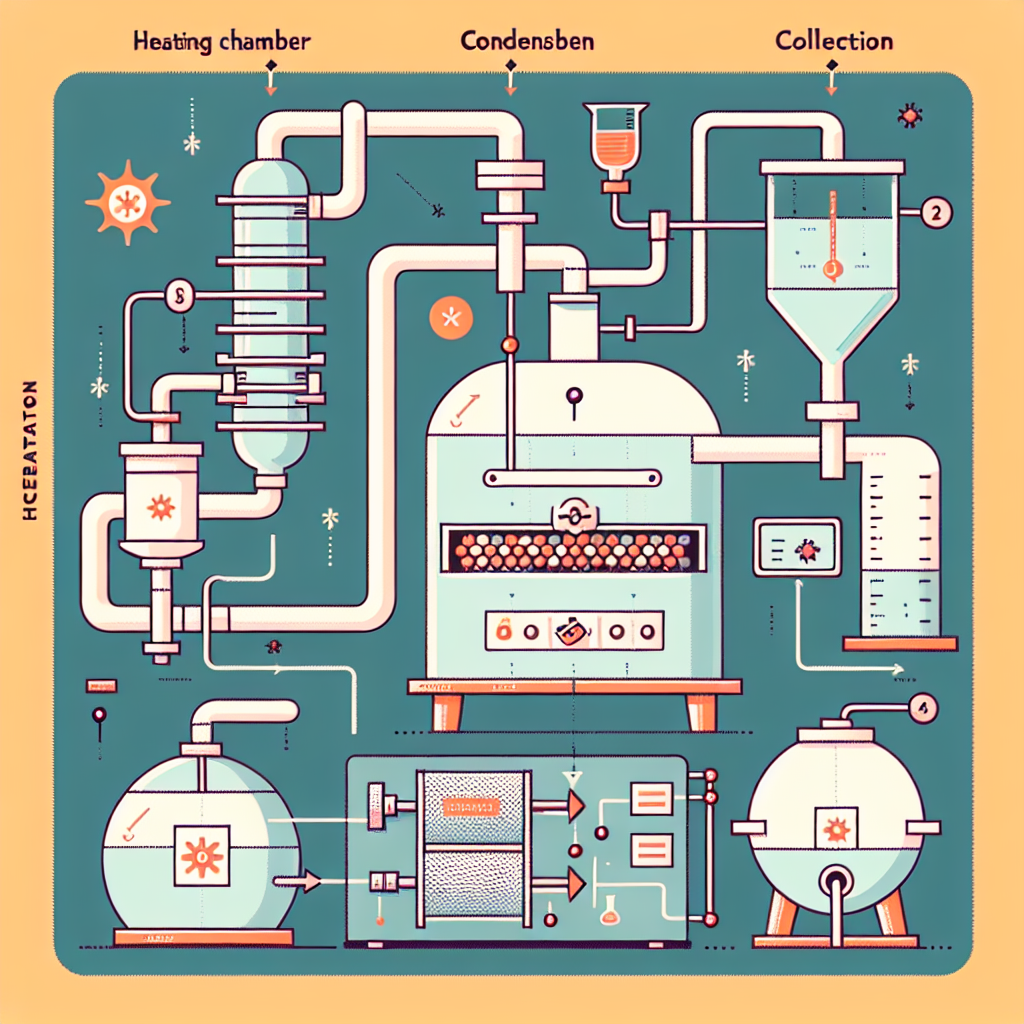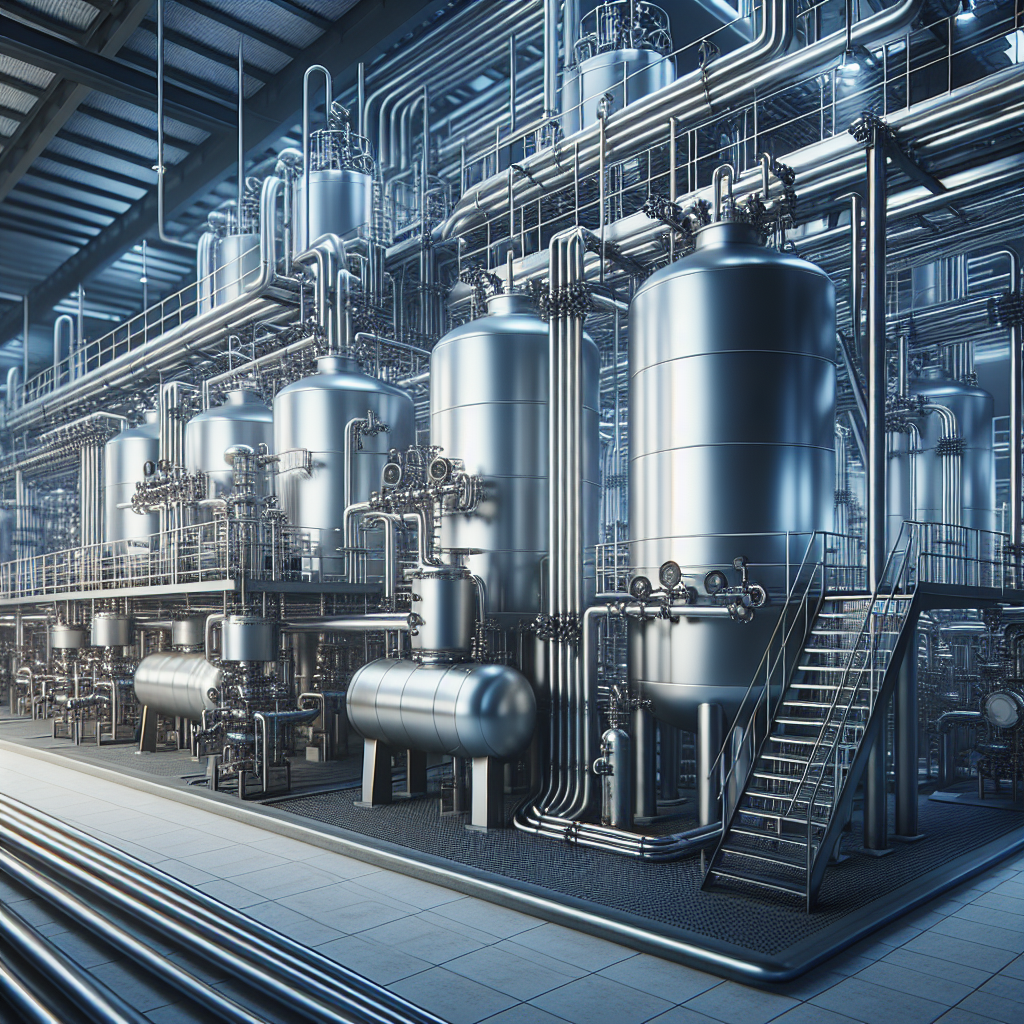Water Distillation: From Industrial Scale to Home Systems

Water Distillation: From Industrial Scale to Home Systems
Introduction
Welcome to the fascinating world of water distillation, where we transform ordinary H2O into pure, pristine liquid gold! Whether you’re a municipality looking to optimize your water treatment processes or an engineer curious about the latest home systems, understanding the distillation process is essential.
Picture this: every drop of distilled water is like a superhero, swooping in to save the day by removing impurities and contaminants. But how does this magical transformation happen? And why should you care? From industrial-scale operations that supply our hospitals with lab-grade distilled water to DIY methods that allow you to make your own at home, we’re diving deep into all things distillation!
In this blog post, we’ll explore:
- The science behind water purification
- How to distill water efficiently both on an industrial scale and in your kitchen
- The benefits of drinking distilled water and its various uses from humidifiers to baby formula
- The pros and cons of different types of purified water, including a showdown between distilled vs spring water
- Future trends in water purification technologies that could change the game!
So grab your goggles and lab coat (or maybe just a glass), and let’s embark on this watery adventure together. By the end, you’ll be equipped with all the knowledge you need about how to distill water like a pro whether you’re working with high-tech industrial distillation systems or whipping up homemade distilled water in your kitchen!
Understanding Distillation Water
Welcome to the fascinating world of distillation water! You might be wondering, what exactly is this magical liquid? Well, let’s break it down.
- Definition of distillation water: Distillation water is essentially purified water that has undergone the distillation process. This method involves heating water to create steam and then cooling it back into a liquid, effectively removing impurities and contaminants.
- Overview of the distillation process: The distillation process is like a high-tech magic trick! First, you heat the water until it turns into steam. As the steam rises, it leaves behind dissolved solids and other nasties. Then, this steam travels through a cooling system where it condenses back into liquid form voilà! You’ve got yourself some distilled water.
- Importance in water purification: In an era where clean drinking water is paramount, understanding the importance of distillation in water purification cannot be overstated. It’s a reliable method that not only removes harmful bacteria and viruses but also eliminates heavy metals and other chemical contaminants. This makes distilled water a go-to choice for many applications from laboratory experiments to medical uses.
Key Takeaway: Distillation water isn’t just any ordinary H2O; it’s your ticket to pure hydration without the unwanted extras!
If you’re still skeptical about this whole distilled water phenomenon, think about it: would you rather sip on something that might contain mysterious minerals or enjoy a refreshing glass of crystal-clear purity? The choice is clear!
The Distillation Process Explained
Welcome to the fascinating world of distillation water where the magic of chemistry meets the art of purification! The distillation process is like a meticulous dance, transforming ordinary water into a pristine liquid that’s ready for various uses. Ready to learn the steps? Let’s dive in!
Steps in the Distillation Process
- Heating: The journey begins by heating water in a distillation apparatus until it reaches its boiling point. This is where water becomes steam, leaving impurities behind.
- Vaporization: As the water boils, it vaporizes into steam, effectively separating itself from contaminants such as minerals, chemicals, and microorganisms.
- Condensation: The steam rises through a cooling system often called a condenser where it cools down and transforms back into liquid form. Voilà! You now have distilled water.
- Collection: Finally, the purified water is collected in a separate container, ready for use or bottling.
Chemistry of Distillation for Purifying Liquids Like H2O
The chemistry behind distillation is as riveting as any plot twist in your favorite thriller! When you heat water, you’re essentially breaking the bonds between molecules. As these molecules gain energy and turn into vapor, they leave behind anything that doesn’t evaporate like salts and heavy metals. This process ensures that what comes out on the other side is as close to pure H2O as possible.
Types of Distillation Methods
Not all heroes wear capes similarly, not all distillation methods are created equal! Here are some popular types:
- Simple Distillation: Perfect for separating liquids with significantly different boiling points.
- Fractional Distillation: Ideal for separating mixtures with closer boiling points think crude oil!
- Steam Distillation: Often used for extracting essential oils from plants without damaging their delicate structures.
- Azeotropic Distillation: A more complex method for dealing with mixtures that form azeotropes (a fancy term for liquids that can’t be separated by simple distillation).
The advantages of using distillation include high purity levels and versatility across various applications from drinking distilled water to medical use in laboratories!
If you’re curious about how to make distilled water at home or want to explore industrial systems further, stay tuned! Understanding this process opens up a world of possibilities from ensuring safe drinking options to enhancing industrial applications.
Industrial Scale Distillation Systems
When it comes to distillation water on an industrial scale, we’re talking about a whole different ball game. These systems are the heavyweights in the world of water purification, designed to churn out massive quantities of distilled water efficiently and reliably.
Overview of Industrial Distillation Systems
Industrial distillation systems are complex setups that utilize advanced technology to separate components in liquids based on their boiling points. Think of them as the high-tech kitchen gadgets of the water treatment world, but instead of whipping up soufflés, they’re producing ultra-pure water.
Applications in Pharmaceuticals and Electronics Manufacturing
The applications for industrial-scale distillation are vast and varied. In pharmaceuticals, for instance, lab-grade distilled water is crucial for creating medications that are safe and effective. Similarly, in electronics manufacturing, pure water is essential for cleaning components without leaving behind any residue that could cause malfunctions.
Cost of the Distillation Process at an Industrial Scale
The cost associated with the distillation process can be significant. Factors such as energy consumption, maintenance of distillation equipment, and raw material costs all play a role. However, these costs can be offset by the high purity levels achieved, which can lead to fewer defects in products and thus lower overall production costs.
Environmental Impact of Large-Scale Operations
While industrial distillation systems are efficient at producing purified drinking water, they also come with environmental considerations. The energy required to heat large volumes of water can contribute to carbon emissions unless renewable energy sources are utilized. Additionally, waste management from these processes needs careful oversight to minimize ecological footprints.
Home Distillation Systems and Methods
Ready to take the plunge into the world of home distillation? Whether you’re a DIY enthusiast or just want to ensure your drinking water is as pure as possible, making distilled water at home can be both fun and practical. Let’s dive into how you can achieve this!
How to Distill Water at Home?
The beauty of distillation water is that you don’t need a PhD in chemistry to make it. Here’s a straightforward method:
- Gather Your Supplies: You’ll need a large pot with a lid, ice, and a heat source. That’s right your kitchen is your laboratory!
- Add Water: Fill the pot with tap water (or any water you want to purify) but don’t go overboard; leave some room for steam.
- Invert the Lid: Place the lid on the pot upside down. This will help direct the steam to condense and drip into the center.
- Add Ice: Put ice on top of the inverted lid. As the steam rises, it will hit the cold surface, condense, and eventually drip down as distilled water.
- Heat It Up: Turn on your stove and let it simmer. Keep an eye on it this isn’t a set-it-and-forget-it situation!
Makeshift Methods for Homemade Distilled Water
If you’re feeling particularly adventurous or are lacking fancy equipment, here are some makeshift methods:
- The Solar Still: Perfect for sunny days! Dig a small pit in your yard, place a container in the center, cover it with clear plastic wrap, and put a rock in the middle. The sun heats up the water, creating condensation that drips into your container.
- The Coffee Pot Trick: If you have an old coffee maker lying around, you can use it to distill small amounts of water. Just fill it with tap water and let it brew voila! You have distilled water.
Distillation Equipment for Home Use
If you’re serious about making distilled water regularly (and not just for that one-time science fair project), investing in proper distillation equipment might be worth your while:
- Countertop Distillers: These nifty machines can produce several gallons of distilled water per day with minimal effort.
- Bottle-Top Distillers: Perfect for those who want convenience without taking up too much space just attach it to your faucet!
The advantages of home distillation systems are numerous: they allow you to control what goes into your drinking water while saving money in the long run! However, keep in mind that regular maintenance is key to avoiding any potential issues.
Dive into this world of DIY purification; it’s not just about drinking distilled water but also about understanding its benefits and applications like using distilled water for humidifiers or baby formula!
Benefits and Uses of Distilled Water
Alright, let’s dive into the refreshing pool of benefits that distilled water brings to the table. Think of distilled water as the superhero of hydration clean, pure, and ready to save the day in various scenarios!
Health Benefits of Drinking Distilled Water
First off, let’s talk about the health benefits. Drinking distilled water can be a great choice for those looking to avoid contaminants found in tap water. It’s like giving your body a clean slate:
- Free from impurities: The distillation process removes minerals, bacteria, and other unwanted substances.
- Hydration without additives: Perfect for those who prefer their water straight-up no flavors or chemicals.
- Supports detoxification: Some believe it helps flush out toxins more effectively than regular water.
Uses of Distilled Water in Various Applications
The versatility of distilled water is impressive! Here are some popular uses that highlight its practicality:
- Humidifiers: Using distilled water in humidifiers prevents mineral buildup and keeps your device running smoothly.
- Baby Formula: Parents often choose distilled water for mixing baby formula to ensure purity after all, little ones deserve only the best!
- Aquariums: Fish enthusiasts often opt for distilled water to maintain a stable environment free from harmful chemicals.
- Ironting Clothes: It helps prevent mineral deposits on your iron, keeping it in tip-top shape!
The Great Comparison: Distilled vs Purified Water
You might be wondering how distilled water stacks up against other types. Let’s break it down:
| Type | Description | Key Differences |
|---|---|---|
| Distilled Water | Purified through boiling and condensation. | No minerals; free from contaminants. |
| Purified Water | Treated by various methods (reverse osmosis, filtration). | Might retain some minerals; varies by source. |
| Spring Water | Sourced from natural springs; contains minerals. | Tastier but may contain impurities. |
The bottom line? Distillation water is not just about quenching thirst; it’s about making informed choices for health and well-being. So whether you’re hydrating yourself or using it in your humidifier, this pure liquid gold can be a valuable addition to your life!
The Safety and Quality of Distilled Water
When it comes to distillation water, the conversation around safety and quality often bubbles up like steam in a distiller. So, let’s dive into the nitty-gritty of whether drinking distilled water is a wise choice or if it’s just a fad.
Is Distilled Water Safe to Drink?
First things first: is distilled water safe to drink? The short answer is yes! Distilled water undergoes a rigorous purification process that removes impurities, contaminants, and even those pesky minerals you might find in tap water. This makes it one of the cleanest forms of drinking water available.
Dangers and Disadvantages of Drinking Distilled Water Regularly
However, here’s where things get a bit murky. While distilled water is safe, there are some concerns about drinking it exclusively:
- Lack of Minerals: Drinking distilled water means you’re missing out on beneficial minerals like calcium and magnesium that are naturally present in spring or mineral waters.
- Potential for Electrolyte Imbalance: If you’re an athlete or someone who sweats a lot, relying solely on distilled water could lead to an electrolyte imbalance since it doesn’t replenish lost minerals.
- Taste Preferences: Some people find distilled water tastes flat compared to mineral-rich waters. If you’re used to the taste of spring or filtered water, this may be a deal-breaker.
Key Takeaway: While it’s safe to drink distilled water, moderation is key. Consider incorporating other types of purified drinking water into your diet for balanced hydration.
Bottled Distilled Water Brands and Where to Buy Distilled Water
If you’re looking to buy bottled distilled water, several brands have made their mark in this space. Popular options include:
- Nestlé Pure Life: Known for its wide availability and affordability.
- Culligan: Offers both bottled options and home delivery services.
- Kirkland Signature: Costco’s brand that provides quality at a great price.
- Pure Life: A go-to for many households seeking reliable distilled options.
You can typically find these brands at supermarkets or online retailers. Just make sure you check the label some waters labeled as “purified” may not be fully distilled!
The bottom line? While drinking distilled water has its benefits like being free from contaminants it’s essential to balance your hydration sources. So go ahead, sip that clear liquid goodness, but maybe throw in some mineral-rich options too!
The Future of Water Purification Technologies
- Innovations in distillation technology li >
- Comparing reverse osmosis vs distillation li >
- Lab-grade vs regular distilled water li >
< / ul >
< / section >Conclusion h2 >
< / section >
